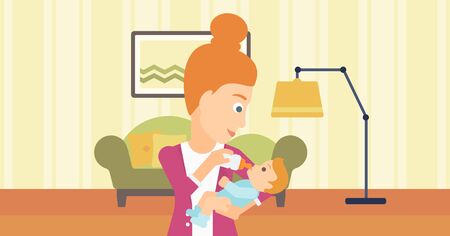1. Understanding Positive Reinforcement in Potty Training
Potty training is a major milestone for both toddlers and parents. One of the most effective strategies to make this transition smoother is using positive reinforcement. Instead of focusing on mistakes or accidents, positive reinforcement encourages and rewards desired behaviors, making potty training a more enjoyable experience for your child.
What Is Positive Reinforcement?
Positive reinforcement is the practice of rewarding good behavior to encourage it to happen again. When applied to potty training, this means acknowledging and celebrating every small success, from sitting on the potty to successfully using it.
Why Encouragement Works Better Than Punishment
Punishing a child for accidents can create fear and anxiety around potty training. On the other hand, encouragement builds confidence and motivation. Children respond best when they feel supported rather than pressured.
Examples of Positive Reinforcement in Potty Training
| Method | Description |
|---|---|
| Praise | A simple “Great job!” or “Im so proud of you!” can boost confidence. |
| Stickers or Charts | A sticker chart allows children to visually track their progress. |
| Tangible Rewards | Small rewards like a special treat or extra story time can be motivating. |
| High-Fives and Hugs | Physical affirmation reinforces positive feelings about potty training. |
| Verbal Encouragement | Phrases like “Youre learning so fast!” help reinforce effort and success. |
Creating a Positive Environment for Potty Training
A stress-free environment helps children feel safe and willing to try. Keep potty training sessions relaxed and avoid pressuring your child. Consistency is key—use the same encouraging words and rewards every time they make progress.
The Power of Patience and Positivity
No two children are the same, and some may take longer than others to fully grasp potty training. Stay patient, celebrate the small wins, and remember that setbacks are normal. With consistent positive reinforcement, your child will gain confidence and independence in using the potty.
2. The Benefits of Positive Reinforcement
Using positive reinforcement in potty training offers numerous psychological and emotional benefits for both children and parents. This approach helps create a stress-free learning experience, making the process smoother and more enjoyable.
Boosts Child’s Confidence
When children receive praise or small rewards for their potty training efforts, they feel accomplished and proud of themselves. This confidence boost encourages them to continue trying and reinforces their ability to succeed.
Reduces Stress for Parents and Children
Potty training can be stressful, especially if a child feels pressured or experiences setbacks. Positive reinforcement shifts the focus from punishment to encouragement, reducing anxiety and frustration for both the child and the parent.
Makes Learning Fun and Engaging
Children respond well to fun and engaging activities. Using sticker charts, verbal praise, or small treats turns potty training into an exciting challenge rather than a dreaded task.
Examples of Positive Reinforcement Methods
| Method | Description |
|---|---|
| Praise | Acknowledge success with words like “Great job!” or “Im so proud of you!” |
| Sticker Chart | Give a sticker each time they successfully use the potty, leading to a bigger reward after several successes. |
| Small Treats | A small piece of candy or a favorite snack as a reward. |
| Extra Playtime | Allow extra time doing their favorite activity as a reward. |
| Special Privileges | A special outing or choosing a bedtime story as an incentive. |
Encourages Independence
Praising children for using the potty on their own fosters independence. They begin to understand that they have control over their own bodies, which builds self-reliance and responsibility.
Strengthens Parent-Child Bond
A supportive potty training experience strengthens the bond between parent and child. When parents celebrate small victories with their child, it creates a positive connection that extends beyond potty training.

3. Effective Rewards and Encouragement Strategies
Positive reinforcement plays a crucial role in potty training by encouraging children to develop good bathroom habits. By using rewards and encouragement, parents can make the learning process enjoyable and stress-free for their little ones. Here are some effective strategies that align with child development principles.
Praise and Verbal Encouragement
One of the simplest and most effective ways to reinforce potty training success is through verbal praise. When your child successfully uses the potty, offering enthusiastic encouragement helps them feel proud of their accomplishment. Use phrases like:
- “Great job using the potty!”
- “I’m so proud of you!”
- “You’re becoming such a big kid!”
Keeping the tone positive and excited makes potty training a more rewarding experience for your child.
Sticker Charts
Sticker charts provide a visual representation of progress, which can be very motivating for young children. Every time your child successfully uses the potty, they earn a sticker to place on their chart. This method helps build consistency and excitement around potty training.
| Step | Reward |
|---|---|
| Sitting on the potty | A fun sticker |
| Using the potty successfully | A bigger or special sticker |
| A full row of stickers | A small prize or extra story time |
Tangible Rewards
Small tangible rewards can also reinforce positive behavior without over-relying on material incentives. These rewards should be simple but meaningful:
- A favorite snack (like a small piece of fruit or cracker)
- An extra bedtime story
- A fun dance party together
- A special privilege, like choosing a family activity
The Importance of Consistency and Timing
The key to successful reinforcement is consistency. Make sure rewards are given immediately after a successful potty attempt so your child connects the action with the positive outcome. Over time, as your child becomes more comfortable with potty training, you can gradually reduce tangible rewards while continuing to offer praise and encouragement.
4. Common Challenges and How to Overcome Them
Potty training isn’t always a smooth journey. Many parents encounter hurdles such as resistance, regressions, and accidents. The good news is that positive reinforcement can help make the process easier and more encouraging for your child. Let’s explore some common challenges and how to address them effectively.
Resistance to Using the Potty
Some toddlers resist potty training due to fear, discomfort, or simply not wanting to break their routine. Instead of forcing them, use positive reinforcement to create a more inviting experience.
How to Overcome Resistance:
- Make it fun: Let your child pick out a special potty or decorate it with stickers.
- Use rewards: Offer small incentives like praise, stickers, or a favorite activity after successful attempts.
- Lead by example: Let them see older siblings or even parents using the toilet so they feel more comfortable.
Setbacks and Regressions
It’s common for children to have setbacks, especially during major life changes or stressful situations. Staying patient and reinforcing progress positively can help them regain confidence.
How to Handle Setbacks:
- Avoid punishment: Accidents are normal; instead of scolding, reassure your child that its okay and encourage them to try again.
- Create a reward chart: Tracking successes visually can motivate your child.
- Stay consistent: Keep routines steady and continue using positive reinforcement techniques.
Frequent Accidents
Toddlers may struggle with recognizing when they need to go. Encouragement and gentle reminders can help minimize accidents over time.
Tips for Managing Accidents:
| Challenge | Positive Reinforcement Strategy |
|---|---|
| Your child forgets to use the potty | Praise them for trying and gently remind them regularly |
| Your child gets upset after an accident | Reassure them that accidents happen and celebrate their next success |
| Your child refuses to sit on the potty | Create a fun potty-time routine with songs or books |
5. Creating a Supportive and Positive Potty Training Environment
Establishing a positive learning space is essential for successful potty training. Children thrive in an environment that is consistent, encouraging, and free from pressure. By focusing on patience, consistency, and celebrating small successes, you can create a supportive atmosphere that helps your child feel confident and motivated.
Consistency: Establishing Routine and Expectations
Consistency is key when it comes to potty training. Setting clear expectations and maintaining a predictable routine helps children understand what is expected of them. Here are some ways to establish consistency:
| Strategy | How It Helps |
|---|---|
| Set Regular Potty Times | Encourages habit formation by prompting your child to use the potty at consistent intervals. |
| Use the Same Language | Using familiar words for potty-related activities helps reinforce understanding. |
| Keep Supplies in the Same Place | A designated potty area creates familiarity and comfort for your child. |
Patience: Encouraging Without Pressure
Potty training takes time, and every child progresses at their own pace. Avoid showing frustration or disappointment when accidents happen. Instead, use gentle reminders and encouragement to keep the experience positive. Some ways to practice patience include:
- Avoid rushing the process—let your child take the lead.
- Offer reassurance after accidents instead of punishment.
- Recognize that setbacks are normal and part of learning.
Celebrating Small Successes: Building Confidence and Motivation
Praising small achievements can help boost your childs confidence and make potty training a more enjoyable experience. Celebrations don’t have to be extravagant—simple gestures can go a long way:
- Verbal Praise: Saying “Great job!” or “Im so proud of you!” reinforces positive behavior.
- Stickers or Reward Charts: A visual representation of progress can keep your child engaged.
- Special Privileges: Letting your child pick a bedtime story or an extra playtime as a reward can be motivating.
Creating a Comfortable Learning Space
Your childs potty training environment should be comfortable and inviting. Consider these tips:
- Choose a Child-Friendly Potty: Whether its a standalone potty or a seat insert, pick one that suits your childs comfort level.
- Keep Extra Clothes Nearby: Having easy access to clean clothes minimizes stress after accidents.
- Create a Relaxed Atmosphere: Encourage your child with books or songs while they sit on the potty.
A supportive and positive environment makes all the difference in potty training success. By maintaining consistency, practicing patience, and celebrating each milestone, you can help your child feel confident and eager to learn.


